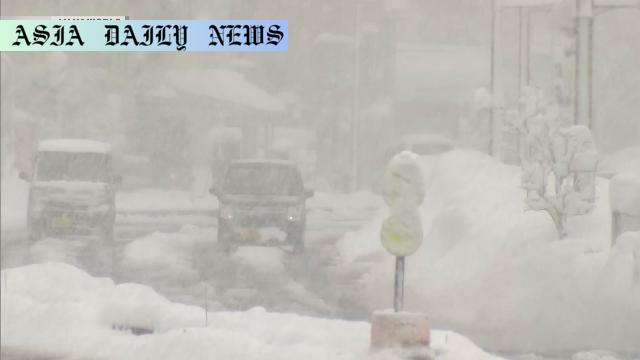Snowfall: Heavy snow blankets the Sea of Japan coast, impacting regions like Ishikawa and creating hazards for damaged structures.
Massive snowfall blankets the Sea of Japan coast, with record snowfall recorded in multiple areas.
Ishikawa Prefecture faces potential risks of building collapses due to previous earthquake damage.
Authorities advise caution for avalanches, power outages, and traffic disruptions.

Heavy Snowfall Blankets the Sea of Japan Coast
Japan’s Sea of Japan coast is currently facing unprecedented amounts of snowfall, causing disruptions and potential dangers in various regions. Weather officials have reported massive snowfalls due to a combination of a powerful cold air mass and a distinct winter pressure pattern. This phenomenon has primarily impacted areas on the main island of Honshu.
Record-Breaking Snowfall in Key Locations
Among the most affected areas is Ishikawa Prefecture, including the Noto Peninsula, where residents have been advised to stay alert. The Noto Peninsula, which suffered a powerful earthquake last year, faces an added threat, as the snow load may exacerbate structural weaknesses, causing damaged buildings to collapse. Other areas reporting heavy snow include Aomori Prefecture’s Sukayu region, with an accumulated 496 centimeters of snow, Uonuma City in Niigata Prefecture with 367 centimeters, and Ohkura Village in Yamagata Prefecture with 320 centimeters by Saturday noon.
Forecasts for Further Snowfall
Weather forecasts predict that snowfall in the next 24 hours could reach up to 70 centimeters in Niigata Prefecture, 60 in the Tohoku region, 40 in the Hokuriku and Kinki regions, and 35 in the Chugoku region. Weather officials have urged residents and travelers in these areas to reconsider their plans during the ongoing three-day holiday period. There is a possibility of significant traffic disruptions, avalanches, power outages, and falling trees due to the extreme conditions.
Precautionary Measures and Public Warnings
Authorities have issued strong advisories urging people to remain cautious of hazardous conditions. Avalanches, especially, remain a pressing concern in mountainous regions. Meteorologists have highlighted the importance of staying aware of updated weather conditions and modifying plans to ensure safety. Electricity networks may also suffer disruptions, so residents are encouraged to prepare for potential power outages.
Insights on the Broader Impact
Heavy snowfall not only brings immediate weather-related risks but also affects local economies. Disruptions in transportation can halt the supply chain, particularly in rural areas, making it difficult to deliver food, fuel, and other necessities. Meanwhile, repair efforts stemming from last year’s earthquake in areas such as the Noto Peninsula now face further delays. Building collapses could increase reconstruction costs significantly, further burdening the regional economy.
The Importance of Preparedness
This evolving situation highlights the critical need for advanced preparation, reliable weather forecasts, and community-wide cooperation. Local governments must be well-equipped to handle extreme climate events like the present snowfall while ensuring that residents, especially those in vulnerable areas, receive timely assistance. Ensuring that essential services and routes remain accessible during extreme events should be prioritized to maintain stability within affected communities.



Commentary
The Magnitude of Japan’s Snowfall Crisis
The recent snowfall in Japan, particularly on the Sea of Japan coast, underscores the profound impact of extreme weather on vulnerable communities. With areas like Ishikawa Prefecture already reeling from the effects of last year’s earthquake, the added weight of heavy snow poses a compounded threat. This scenario serves as a stark reminder of how environmental events magnify pre-existing vulnerabilities.
Challenges of Infrastructure and Recovery
The risk of building collapses in Ishikawa highlights the fragility of affected infrastructure. Reconstruction efforts in disaster-stricken regions are already challenging, and the added stress from extreme weather complicates these endeavors further. For communities still recovering, having to contend with a new set of challenges is both physically and emotionally draining.
A Global Perspective on Climate Events
Globally, we have witnessed a sharp increase in extreme weather events. Climate change has exacerbated the frequency and intensity of these occurrences, and Japan’s current situation is no exception. These events demand both immediate action to protect residents and broader, long-term strategies to adapt to a rapidly changing climate.
A Call for Preparedness and Innovation
Japan, renowned for its advanced technology and disaster preparedness, must continue to innovate to address emerging climate challenges. Leveraging technology to monitor conditions and preparing communities to respond effectively can reduce the adverse effects of such crises. Ultimately, this event serves as a reminder that vigilance and adaptability are key to safeguarding lives and livelihoods.